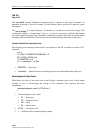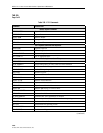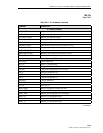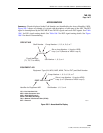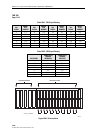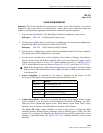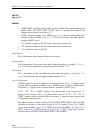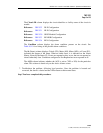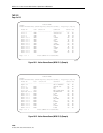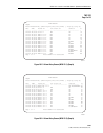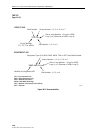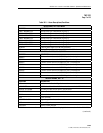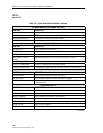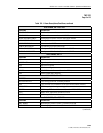
ADCP-61-471 • Issue 4 • June 2000 • Section 2: Operation and Maintenance
2-288
© 2000, ADC Telecommunications, Inc.
TAP-101
Page 2 of 13
Identifier
• “EQPT-XXXY” identifies modules within the chassis where XXX represents the type of
module (MPU, LIU, MXW, MXP, or EXT), and “#” represents the number of the
Soneplex chassis in the system (always “1”).
• “HDSL” identifies trouble on the HDSL loop. A “1” in the last column of the AID
indicates trouble on HDSL Loop 1. A “2” in the last column of the AID indicates
trouble on HDSL Loop 2.
• “T1” identifies trouble on the DS1 either at the local or remote site.
• “T2” identifies trouble on the DS2 either at the local or remote site.
• “T3” identifies trouble on the DS3.
Shelf Number
This is the number of the Soneplex chassis in the system.
Group Number
This is the number of the group in the chassis where the module is located (1, 2, 3, 4, 5,
6, or 7). The Group number does not apply when the identifier is T3.
Slot Number
This is the number of the slot within the group where the module is located (1, 2, 3,
or 4). The Slot number does not apply when the identifier is T3.
Site or Loop Number
If HDSL appears in the first column of the access identifier and a “1” appears in this
location, there is a problem on HDSL Loop 1. If HDSL appears in the first column of the
circuit and a “2” appears in this location, there is a problem on HDSL Loop 2.
If “T1”, “T2”, “T3”, or “EQPT” appears in the first column of the circuit and a “1”
appears in this location, there is a problem at the local site. If “T1”, “T2”, “T3”, or
“EQPT” appears in the first column of the circuit and a “2” appears in this location, there
is a problem at the remote site.
The
Locn
(Location) column displays FEND, NEND, REPR, REPC, CRP, and RRP
indicating the location of the alarm. Figure 101-6 (T1 system), Figure 101-7 (HDSL
system with one HRX), Figure 101-8 (HDSL system with two HRXs), and Figure 101-9
(DLX), Figure 101-10 (ODS2 system), and Figure 101-11 (RLX system) show locations
and descriptions of FEND, NEND, REPR, REPC, CRP, and RRP.



